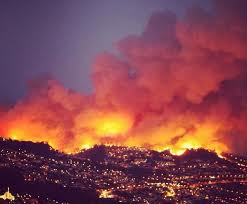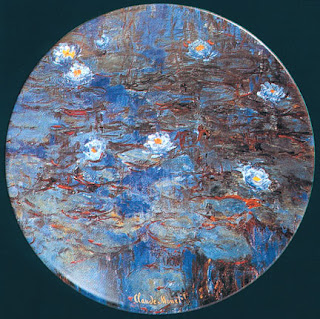POLARIS Project | 3B's Research Group from MinhoUniversity obtains one of the biggest funding ever attributted to a portuguese scientific project.
Projeto POLARIS: Grupo 3B's da UMinho obtém um dos maiores financiamentos de sempre para um projeto científico português
O Grupo 3B’s – Biomateriais, Biomiméticos e Biodegradáveis da Universidade do Minho iniciou no passado mês de outubro o projeto POLARIS, que permitiu obter um dos maiores financiamentos de sempre para um projeto de Investigação Científica Português.
Coordenado por Rui L. Reis e financiado pelo 7º Programa Quadro da Comissão Europeia, o projeto POLARIS pretende potenciar a excelência da investigação do 3B’s-UMinho, fortalecendo as suas atividades na área da Nanomedicina.
http://www.3bs.uminho.pt/sites/default/files/Press%20Release_POLARIS_Novembro%202012.pdf
North Pole webcam picture taken on 22 August 2012 showing
ice cap melting. Climate scientists expect the Arctic sea ice is
on course to plummet to its lowest levels ever this weekend.
Photograph: University of Washington/ North Pole Environmental
Observatory/NOAA
as early as this weekend, in "dramatic changes"
signalling that man-made global warming is having a major
impact on the polar region.
With the melt happening at an unprecedented rate of more than
100,000 sq km a day, and at least a week of further melt expected
before ice begins to reform ahead of the northern winter,
satellites are expected to confirm the record – currently set in 2007 – within days.
"Unless something really unusual happens we will see the record broken
in the next few days. It might happen this weekend, almost certainly
next week," Julienne Stroeve, a scientist at the US National Snow and
Ice Data Centre (NSIDC) in Boulder, Colorado, told the Guardian.
"In the last few days it has been losing 100,000 sq km a day, a record
in itself for August. A storm has spread the ice pack out, opening up
water, bringing up warmer water. Things are definitely changing quickly."
Because ice thickness, volume, extent and area are all measured differently,
it may be a week before there is unanimous agreement among the
world's cryologists (ice experts) that 2012 is a record year. Four out of
the nine daily sea ice extent and area graphs kept by scientists in
the US, Europe and Asia suggest that records have already been broken.
"The whole energy balance of the Arctic is changing. There's more
heat up there. There's been a change of climate and we are
losing more seasonal ice. The rate of ice loss is faster than the
models can capture [but] we can expect the Arctic to be ice-free in
summer by 2050," said Stroeve.
"Only 15 years ago I didn't expect to see such dramatic changes – no one
did. The ice-free season is far longer now. Twenty years ago it was
about a month. Now it's three months. Temperatures last week in the
Arctic were 14C, which is pretty warm."
Scientists at the Danish Meteorological Institute, the Arctic
Regional Ocean Observing System in Norway and others in Japan
have said the ice is very close to its minimum recorded in 2007.
The University of Bremen, whose data does not take into account ice
along a 30km coastal zone, says it sees ice extent below the
all-time record low of 4.33m sq km recorded in September 2007.
Ice volume in the Arctic has declined dramatically over the past decade.
The 2011 minimum was more than 50% below that of 2005. According
to the Polar Science Centre at the University of Washington it now
stands at around 5,770 cubic kilometres, compared with
12,433 cu km during the 2000s and 6,494 cu km in 2011. The ice volume for
31 July 2012 was roughly 10% below the value for the same day in 2011.
A new study by UK scientists suggests that 900 cu km of summer
sea ice has disappeared from the Arctic ocean over the past year.
The consequences of losing the Arctic's ice coverage
for the summer months are expected to be immense.
If the white sea ice no longer reflects sunlight back into space,
the region can be expected to heat up even more than at present.
This could lead to an increase in ocean temperatures with
unknown effects on weather systems in northern latitudes.
In a statement, a Greenpeace spokesman said: "The
disappearing Arctic still serves as a stark warning to us all.
Data shows us that the frozen north is teetering on the brink.
The level of ice 'has remained far below average' and appears
to be getting thinner, leaving it more vulnerable to future
melting. The consequences of further rapid ice loss at the top of
the world are of profound importance to the whole planet. This is
not a warning we can afford to ignore."
Longer ice-free summers are expected to open up the Arctic
ocean to oil and mining as well as to more trade. This year at
least 20 vessels are expected to travel north of Russia between
northern Europe and the Bering straits. Last week a Chinese
icebreaker made the first voyage in the opposite direction.
"Every one of the 56,000 Inuits in Greenland have had to adapt to
the retreat of the ice," said Carl-Christian Olsen, president
of the Inuit Circumpolar Council in Nuuk, Greenland. "The permafrost
is melting and this is jeopardising roads and buildings.
The coastline is changing, there is more erosion and storms,
and there are fewer mammals like polar bears. It means there
can be more mining, which is good for the economy,
but it will have unpredictable effects on social change".
Research published in Nature today said that warming
in the Antarctic peninsula, where temperatures have risen about
1.5C over the past 50 years, is "unusual" but not
unprecedented relative to natural variation. The research
by Robert Mulvaney of the British Antarctic Survey, Cambridge,
based on an ice-core record, showed that the warming
of the north-eastern Antarctic peninsula began about
600 years ago. Temperature increases were said to be within
the bounds of natural climate variability.
The difference between the rate of warming at the two poles
is attributed to geographical differences. "Antarctica is a
continent surrounded by water, while the Arctic is an ocean
surrounded by land. Wind and ocean currents around
Antarctica isolate the continent from global weather patterns,
keeping it cold. In contrast, the Arctic Ocean is intimately
linked with the climate systems around it, making it more sensitive
to changes in climate," said a spokesman for the NSIDC.
















